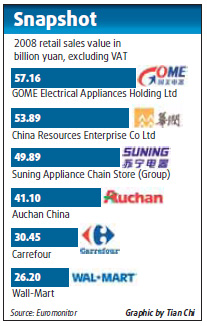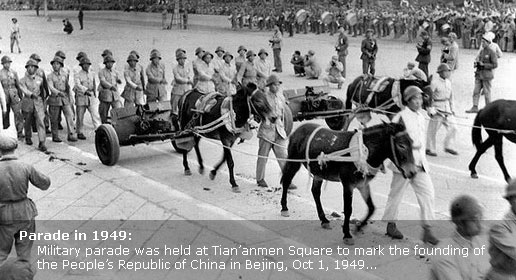60 People, 60 Stories
Buying in
By Andrew Moody (China Daily)
Updated: 2009-09-30 07:41
Reform radically altered the landscape and a new class of consumer emerged with money in their pockets.

It was not until the 1990s that foreign retailers began to enter the market with Carrefour from France making its debut in 1995, followed by the American giant Wal-Mart a year later and then Tesco from the United Kingdom in 2004.
Apart from food retail, other major retailers have made their way to China, including the likes of Nike from the United States, Swedish home decoration giant IKEA and UK DIY retailer B & Q.
One of the biggest catalysts was China's entry into the World Trade Organization in 2002, when restrictions on foreign retailers expanding their operations in the market were lifted.
Non-food retail has been growing at a phenomenal compound rate of 13.8 percent since 2004, according to Euromonitor.
One of Towle's objectives is to make Tesco, which has 67 stores in China and 10 planned every year, the retailer's biggest market - bigger even than its home market.
"We are here to win, but winning in China is a very long game. There is ultimately massive potential here," he says.
Towle believes the next major evolution in China will be the emergence of destination shopping malls not just in major cities, but also in more rural locations.
"There will be the development of huge, high-quality retail outlets in less affluent rural areas. Stores will get bigger and modern retail will be much more widely enjoyed over the next three decades or so."
Towle predicts consumers will become increasingly more sophisticated as to what they demand from retailers - and it will be a challenge for retailers to meet that sophistication.
"Retailers have in the past been able to present brands to consumers to stimulate demand. The process to some extent has been supply led," he says.
"In the future, it will be customers who will be demanding new products as they become more exposed to advertising, general media and a more Internet-based culture."
Time Line
1949
Shoppers have to contend with rationing and supply shortages.
1950s-1970s
State-owned stores with limited product ranges are where the majority of consumers buy their goods.
1978
Average rural consumer has an annual disposable income of just 133 yuan.
1980s
New private sector economy creates a new breed of Chinese consumers.
1990s
China becomes a magnet for the world's retailers, including Carrefour and Wal-Mart.
2000s
China's entry into the World Trade Organization in 2001 sees restrictions on foreign retailers relaxed.







